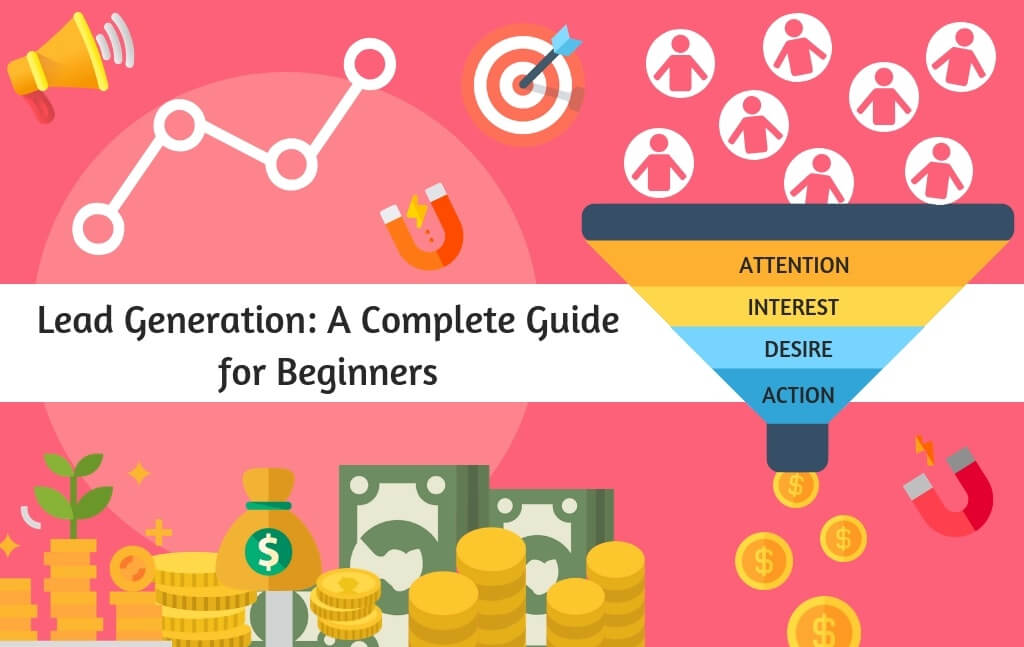Using Inbound Strategies to Generate Business Leads: A Starter’s Guide
In today's competitive business landscape, attracting potential customers and converting them into loyal patrons is crucial for success. This is where lead generation comes in—the lifeblood of any sales and marketing strategy. But forget cold calls and intrusive tactics. Inbound marketing offers a more sustainable and effective approach to generating high-quality leads.
This guide delves into the world of inbound lead generation, equipping you with the knowledge and tools to attract qualified leads who are genuinely interested in your offerings.

Understanding Inbound Marketing
Inbound marketing, unlike outbound methods that push messages onto prospects, focuses on attracting customers by providing valuable content and building trust. It's a win-win situation: you establish yourself as a thought leader in your industry while attracting potential customers who are actively seeking solutions.
Here's the core principle:
1. Attract: Draw in your target audience with informative and engaging content, such as blog posts, social media interactions, or SEO-optimized website pages.
2. Engage: Convert website visitors into leads by offering valuable resources like ebooks, webinars, or lead magnets (free content in exchange for contact information).
3. Delight: Nurture your leads with personalized communication and targeted content that addresses their specific needs and pain points. This builds trust and positions you as the go-to solution.
4. Close: Guide nurtured leads through the sales funnel, ultimately converting them into paying customers.
Benefits of Inbound Lead Generation
1. Cost-effective: Compared to outbound methods like cold calling, inbound marketing offers a higher ROI (return on investment) as you target a pre-qualified audience already interested in your offerings.
2. High-Quality Leads: Inbound methods attract leads who are actively seeking solutions, increasing the likelihood of successful conversion.
3. Builds Brand Awareness: Valuable content positions you as an industry expert, fostering brand trust and recognition.
4. Long-Term Growth: Inbound marketing generates a steady stream of leads, nurturing them into loyal customers who can be further upsold or become brand advocates.
Essential Inbound Lead Generation Strategies
Now let's explore some key strategies to implement a successful inbound lead generation campaign:
1. Content marketing: This is the cornerstone of inbound marketing. Create high-quality content that educates, informs, and resonates with your target audience. This could include blog posts, articles, infographics, videos, or white papers that address their pain points and offer valuable solutions, as Upbeat is also using the same content marketing to grow their readers to 320%.
2. Search Engine Optimization (SEO): Ensure your website ranks highly in search engine results pages (SERPs) for relevant keywords. This increases organic traffic, attracting potential customers who are actively searching for solutions you provide.
3. Social Media Marketing: Leverage social media platforms to connect with your target audience, share your content, and engage in conversations. Utilize paid social media advertising for targeted reach and lead generation.
4. Landing Pages: Create dedicated landing pages with compelling calls to action (CTAs) to capture leads in exchange for valuable content downloads like ebooks, webinars, or free trials.
5. Email Marketing: Build an email list through opt-in forms and nurture leads with targeted email campaigns that provide valuable insights, industry news, and special offers.

Building a Strong Lead Capture System
Once you've attracted visitors with your content, convert them into leads by offering valuable resources in exchange for their contact information. Here are some effective lead capture techniques:
1. Lead magnets: Offer downloadable guides, ebooks, white papers, or templates that address your target audience's specific challenges.
2. Free Webinars or Online Courses: Provide educational webinars or courses on relevant topics to capture leads and showcase expertise.
3. Free Trials or Demos: Offer free trials or demos of your product or service to give potential customers a firsthand experience and increase conversion rates.
4. Website Forms: Strategically place opt-in forms on your website, such as blog post footers, landing pages, or sidebars, to capture leads interested in learning more.
Nurturing Your Leads
Generating leads is just the first step. To convert them into paying customers, nurture them through the sales funnel with personalized communication and targeted content. Utilize email marketing automation tools to send tailored messages based on their interests and stage in the buyer's journey. Here are some effective nurturing strategies:
1. Segment Your Audience: Group leads based on their demographics, interests, and behavior for more personalized communication.
2. Personalized Email Campaigns: Send targeted email sequences that address their specific needs and provide relevant content throughout the buying process.
3. Lead Scoring: Assign points to leads based on their level of engagement with your content and website activity to prioritize high-potential leads for sales teams.

Measuring Your Inbound Success
Tracking and analyzing your inbound marketing efforts is essential to identifying what's working and where you can improve. Here are some key metrics to monitor:
1. Website Traffic: Track website traffic using analytics tools like Google Analytics to understand how many visitors you're attracting and from which sources.
2. Lead Generation: Monitor the number of leads generated through different channels like landing pages, social media, or email campaigns.
3. Lead Conversion Rate: Measure the percentage of leads that convert into paying customers. This helps you evaluate the effectiveness of your nurturing efforts.
4. Engagement Metrics: Track email open rates, click-through rates, and social media engagement to understand how well your content resonates with your audience.
5. Customer Lifetime Value (CLTV): Track the total revenue a customer generates over their relationship with your business. This helps assess the long-term impact of your inbound strategy.
Tools and Resources for Inbound Lead Generation
Several powerful tools and resources can streamline your inbound marketing efforts:
1. Content Management Systems (CMS): Platforms like WordPress allow you to easily create, publish, and manage your website content.
2. SEO Tools: Tools like Ahrefs or SEMrush help you analyze keywords, optimize website content for search engines, and track your SEO performance.
3. Social Media Management Tools: Platforms like Hootsuite or Buffer enable you to schedule social media posts, manage multiple accounts, and track engagement metrics.
4. Email Marketing Automation Tools: Services like Mailchimp or Constant Contact help you create, automate, and track email marketing campaigns.
5. Marketing Analytics Tools: Tools like Google Analytics or HubSpot provide comprehensive insights into website traffic, lead generation, conversions, and overall marketing performance.
Conclusion
Inbound lead generation offers a sustainable and cost-effective approach to attracting high-quality leads and converting them into loyal customers. By focusing on creating valuable content, building trust, and nurturing leads through the sales funnel, you can establish a strong foundation for long-term business growth. Remember, inbound marketing is a marathon, not a sprint. Be patient, consistent, and data-driven to see long-term success.




